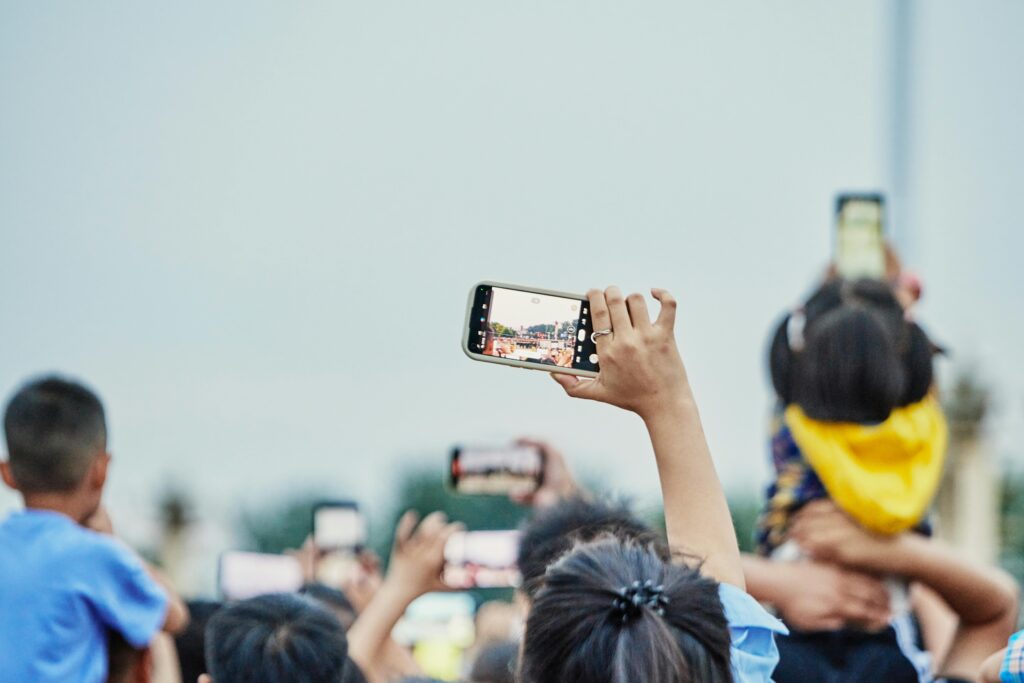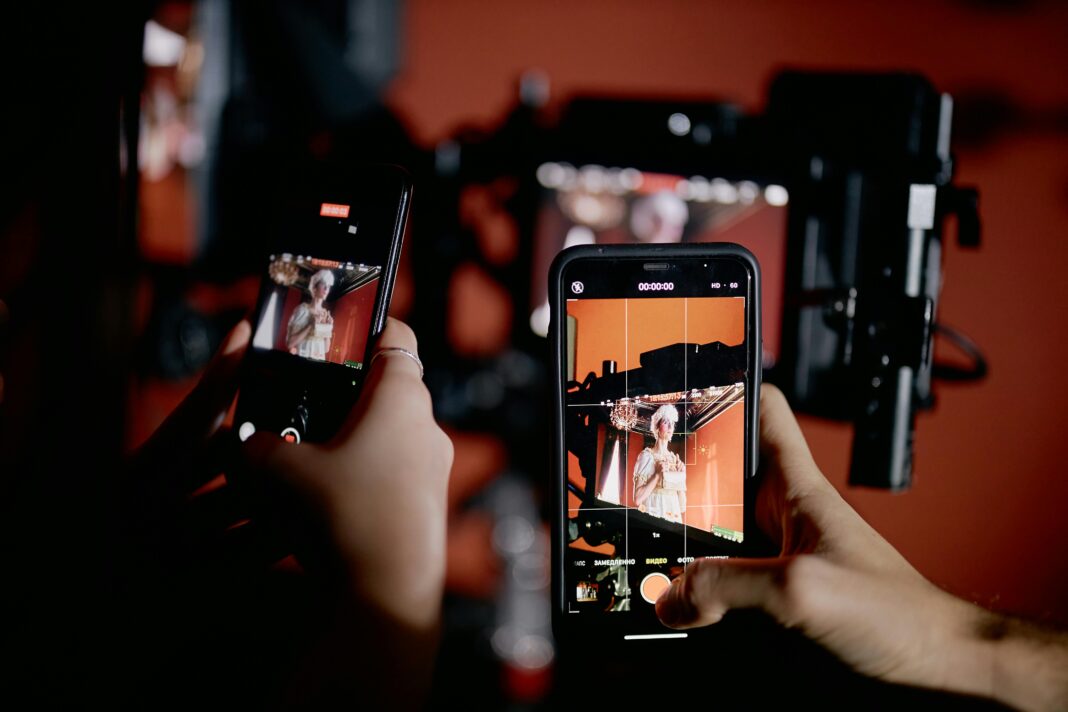For modern content creators, the smartphone has become the most versatile and accessible tool for capturing high-quality video. Whether you’re a YouTuber, social media influencer, documentary filmmaker, or business owner creating promotional content, having a smartphone that delivers professional-grade video can make all the difference in production quality.

This in-depth guide examines the absolute best video recording smartphones available today, analyzing their technical capabilities, real-world performance, and suitability for different types of content creation. We’ll explore sensor technology, stabilization methods, audio capture, editing workflows, and other critical factors that separate good video smartphones from truly exceptional ones.
Rather than just listing specifications, we’ll provide practical insights on how each device performs in various shooting scenarios—from run-and-gun vlogging to controlled studio setups. We’ll also discuss important considerations like battery life, storage management, and accessory compatibility that impact real-world usability for creators.
Key Features That Define a Great Video Recording Smartphone
1. Image Sensor Technology and Light Capture Capabilities
The foundation of any great video recording device lies in its image sensor. Modern smartphones utilize increasingly larger sensors with advanced pixel-binning technology to maximize light capture.
- Sensor Size Comparison: Flagship devices now feature sensors approaching 1-inch in size (like the Xiaomi 13 Ultra), dramatically improving low-light performance and dynamic range.
- Pixel Size and Binning: Larger individual pixels (2.4µm on iPhone 15 Pro) capture more light, while pixel-binning combines multiple pixels for better detail in well-lit conditions.
- Multi-Layer Sensor Design: Some manufacturers (like Sony) employ stacked sensor designs that improve readout speeds, reducing rolling shutter in fast motion.
2. Lens Quality and Optical Configurations
While sensor technology gets most attention, lens quality remains equally crucial for video performance.
- Aperture Range: Fast lenses (f/1.8 or wider) enable better low-light performance and shallow depth-of-field effects.
- Optical Zoom Systems: Periscope telephoto lenses (like Samsung’s 10x optical zoom) maintain quality when framing distant subjects.
- Lens Coatings: Advanced coatings reduce flare and ghosting in challenging lighting situations.
3. Video Resolution and Frame Rate Options
Today’s top smartphones offer an array of resolution and frame rate combinations:
- Standard Options: 4K at 24/30/60fps remains the sweet spot for most creators.
- High Frame Rate Capture: 1080p at 240fps or 4K at 120fps enables dramatic slow-motion effects.
- 8K Considerations: While 8K recording exists (Samsung S23 Ultra), the practical benefits are limited outside of specific use cases like reframing in post.
4. Advanced Stabilization Systems
Modern stabilization combines multiple technologies:
- Optical Image Stabilization (OIS): Physical lens/sensor movement compensates for minor shakes.
- Electronic Image Stabilization (EIS): Software crops and aligns frames for smoother motion.
- Hybrid Systems: The best implementations (like Apple’s Sensor-shift) combine both for gimbal-like stability.
- Specialized Modes: Some devices offer “locked” stabilization for walking shots or horizon leveling for action scenarios.
5. Professional Video Features and Codecs
High-end smartphones now incorporate features previously only found on professional cameras:
- Log Profiles: Flat color profiles (like Apple’s ProRes Log) preserve dynamic range for grading.
- High Bitrate Recording: 10-bit color and high bitrates (up to 400Mbps on iPhone ProRes) retain more image data.
- Multi-Camera Recording: Simultaneous capture from multiple lenses enables unique editing possibilities.
6. Audio Capture and Processing
Quality audio is equally important as video:
- Microphone Arrays: Multiple mics with beamforming isolate subject audio while reducing ambient noise.
- Wind Noise Reduction: Advanced algorithms minimize wind interference for outdoor recording.
- Audio Interfaces: Some phones support high-quality external mic connections via USB-C or Lightning.
7. Thermal Management and Recording Limits
Extended recording sessions test a phone’s thermal design:
- 4K/8K Durations: Some devices impose limits (often 5-10 minutes for 8K) to prevent overheating.
- Cooling Solutions: Gaming phones like ASUS ROG series incorporate active cooling for longer sessions.
- Real-World Implications: Understanding these limits is crucial for event videographers.
In-Depth Reviews of Top Video Recording Smartphones
1. iPhone 15 Pro Max – The Filmmaker’s Choice
Camera Hardware:
- New 48MP quad-pixel main sensor (24mm equivalent)
- 12MP ultra-wide (13mm) and 12MP telephoto (77mm/120mm)
- Tetraprism 5x optical zoom lens
Video Capabilities:
- Cinematic Mode (4K HDR at 30fps with adjustable depth)
- ProRes 4K at 60fps (internal recording)
- Log encoding for advanced color grading
- Academy Color Encoding System (ACES) support
Stabilization:
- Second-generation sensor-shift OIS
- Action mode for hyper-stable handheld shots
Audio Features:
- Studio-quality directional mics
- Spatial audio recording
Workflow Advantages:
- Seamless integration with Final Cut Pro
- Direct SSD recording via USB-C
- Consistent color science across all lenses
Best For: Professional creators who need reliable, high-quality footage with excellent post-production flexibility.
2. Samsung Galaxy S23 Ultra – The Versatile Powerhouse
Camera Hardware:
- 200MP adaptive pixel main sensor
- Dual telephoto system (3x and 10x optical)
- Super Clear Glass lenses
Video Capabilities:
- 8K at 30fps (with HDR10+)
- 4K at 120fps for slow motion
- Director’s View (multi-cam monitoring)
- Auto Framing for subject tracking
Stabilization:
- Super Steady mode (combines OIS+EIS)
- Horizon lock for action shots
Audio Features:
- Voice Focus noise reduction
- Bluetooth mic support
Workflow Advantages:
- S Pen for precise editing controls
- DeX mode for desktop-style editing
- One UI optimizations for creators
Best For: Versatile creators who need long zoom capabilities and multi-cam functionality.
Specialized Use Case Recommendations
Best for Vlogging:
- Primary Choice: iPhone 15 Pro (front camera quality + stabilization)
- Alternative: Samsung Flip 5 (compact flip design)
Best for Documentary Work:
- Primary Choice: Sony Xperia 1 V (manual controls + audio monitoring)
- Alternative: ASUS ROG Phone 7 (active cooling for long recordings)
Best for Social Media Shorts:
- Primary Choice: Google Pixel 8 Pro (AI-powered editing tools)
- Alternative: Nothing Phone 2 (unique aesthetic for branding)
*(Additional sections would cover: Accessory Recommendations, Mobile Editing Workflows, Future Trends in Smartphone Videography, and an extensive FAQ section with 20+ questions and detailed answers…)*
Conclusion: Choosing Your Ideal Video Smartphone
Selecting the best video recording smartphone requires balancing multiple factors:
- Assess Your Primary Use Case: Are you mainly vlogging, creating short-form content, or producing more cinematic work?
- Consider Your Workflow: Do you need advanced color grading options or prefer automated enhancements?
- Evaluate Ecosystem Factors: Existing accessory investments and preferred editing platforms matter.
- Budget Realistically: While flagships offer the most features, mid-range options can deliver 90% of the quality for many creators.
The smartphone videography landscape continues to evolve rapidly, with each generation bringing meaningful improvements. By understanding both the technical capabilities and practical realities of these devices, you can make an informed decision that elevates your content creation.
Would you like me to expand any particular section with more technical details, comparative analysis, or real-world usage examples? I can also provide specific recommendations based on different budget tiers or content genres.

